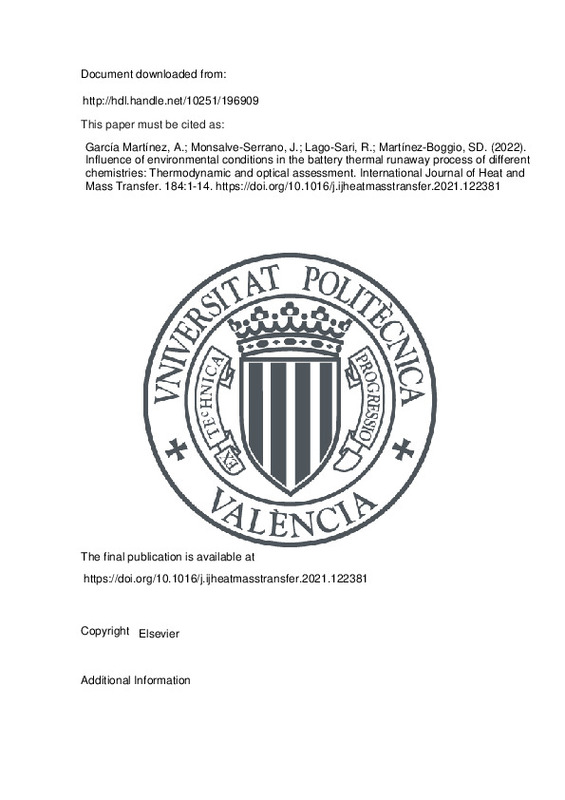JavaScript is disabled for your browser. Some features of this site may not work without it.
Buscar en RiuNet
Listar
Mi cuenta
Estadísticas
Ayuda RiuNet
Admin. UPV
Influence of environmental conditions in the battery thermal runaway process of different chemistries: Thermodynamic and optical assessment
Mostrar el registro completo del ítem
García Martínez, A.; Monsalve-Serrano, J.; Lago-Sari, R.; Martínez-Boggio, SD. (2022). Influence of environmental conditions in the battery thermal runaway process of different chemistries: Thermodynamic and optical assessment. International Journal of Heat and Mass Transfer. 184:1-14. https://doi.org/10.1016/j.ijheatmasstransfer.2021.122381
Por favor, use este identificador para citar o enlazar este ítem: http://hdl.handle.net/10251/196909
Ficheros en el ítem
Metadatos del ítem
| Título: | Influence of environmental conditions in the battery thermal runaway process of different chemistries: Thermodynamic and optical assessment | |
| Autor: | Lago-Sari, Rafael Martínez-Boggio, Santiago Daniel | |
| Entidad UPV: |
|
|
| Fecha difusión: |
|
|
| Resumen: |
[EN] Thermal runaway is one of the main concerns of battery electric vehicles due to the hazard level that represents for the user and the surroundings. Several works studied different type of abuse in lithiumion cells and ...[+]
|
|
| Palabras clave: |
|
|
| Derechos de uso: | Reconocimiento - No comercial - Sin obra derivada (by-nc-nd) | |
| Fuente: |
|
|
| DOI: |
|
|
| Editorial: |
|
|
| Versión del editor: | https://doi.org/10.1016/j.ijheatmasstransfer.2021.122381 | |
| Código del Proyecto: |
|
|
| Agradecimientos: |
The authors want to acknowledge: Operación financiada por la Unión Europea a través del Programa Operativo del Fondo Europeo de Desarrollo Regional (FEDER) de la Comunitat Valenciana 2014-2020 con el objetivo de promover ...[+]
|
|
| Tipo: |
|







![[Cerrado]](/themes/UPV/images/candado.png)


